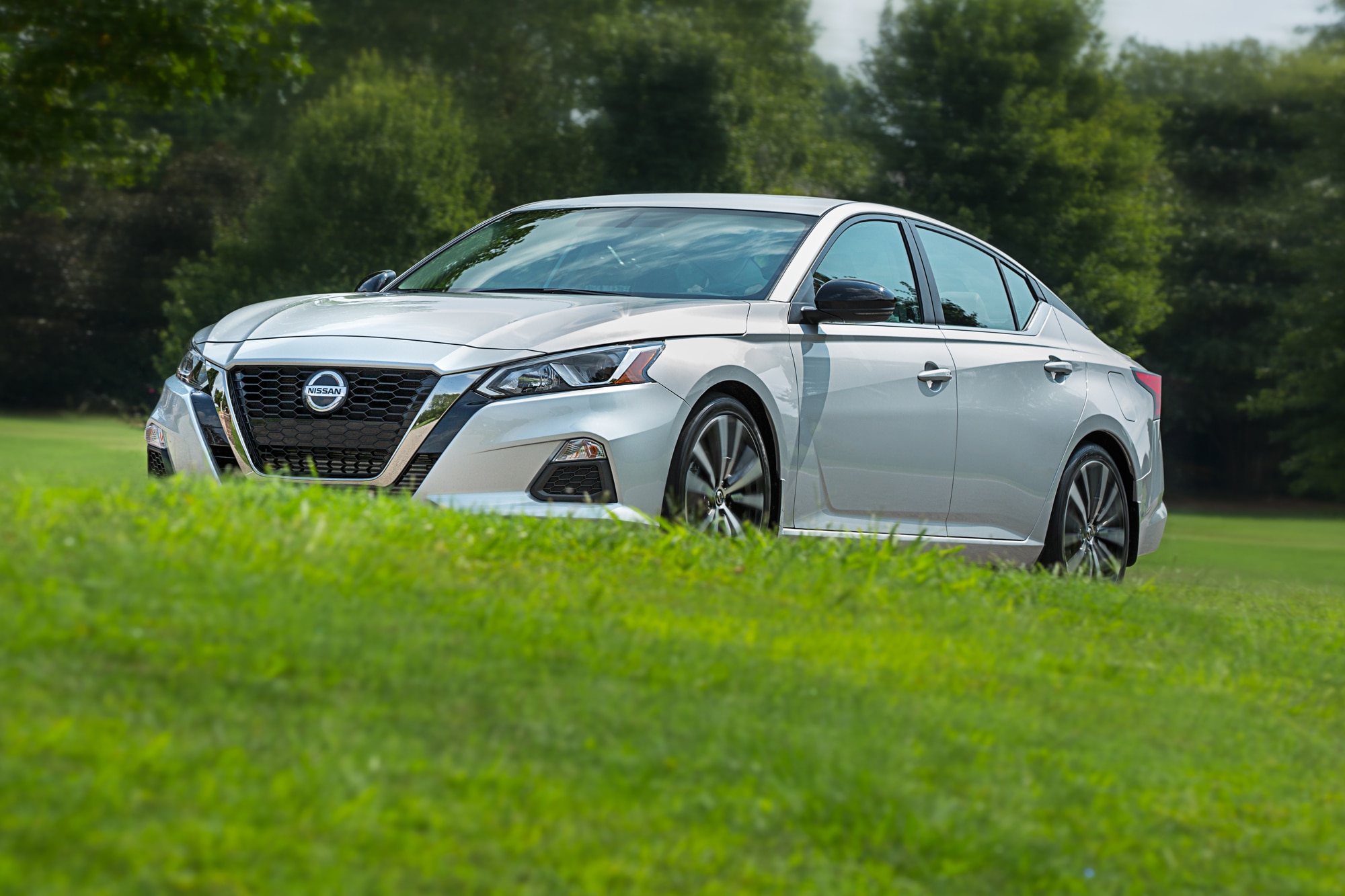What is a Mid-Size Car?
Once available in coupe, hatch, wagon, and sedan form, the mid-size car doesn’t have nearly as broad of a definition as it once did.
 Nissan
Nissan
Before SUVs stole their thunder, mid-size cars appealed to families and singles alike with their multiple body styles, long lists of amenities, generous back seats, ample cargo volume, great handling, and superior comfort over compact cars. But the segment has dwindled over the years so that the mainstream mid-size car market consists of just a handful of sedans today.
Which Brands Sell Mid-Size Cars?
Hardly any American car companies sell mid-size cars anymore. Unless you count their pony cars—which we don’t—Ford and Stellantis (formerly Fiat Chrysler Automobiles) gave up entirely on this segment, and General Motors has only the Chevrolet Malibu left. But Japanese and Korean manufacturers still make innovative, high-quality choices, including the Honda Accord, Nissan Altima, Toyota Camry, Kia K5, Hyundai Sonata, and Subaru Legacy. Volkswagen Passat represents Europe and while Mazda recently discontinued the 6, rumor has it, a replacement could arrive later this year.
How Much Does a Mid-Size Car Cost?
The Legacy leads the pack with a base price of $23,990, but pretty much every mid-size car starts in the mid-$20,000s. Hybrids require a few thousand more. Top trims can reach into the high $30,000s before options, but you should be able to find a well-equipped model below that with a decently powered four- or six-cylinder, plenty of driver-assistance features, and modern cabin tech.
How Big is a Mid-Size Car?
Mid-size cars today are more like the large cars of a couple of decades ago. The EPA classifies them as having between 110 and 119 cu. ft. of interior volume, but that doesn't mean much to the average consumer. Instead, picture a Toyota Camry. (If you can’t call one to mind, just step outside and wait five minutes for one to drive by you.) That’s the quintessential—and most popular—mid-size car out there. Most will seat four adults comfortably and five in a pinch, and the typical trunk offers 15 or 16 cu. ft. of cargo volume.
What Kind of Fuel Economy Does a Mid-Size Car Get?
Most mid-size cars deliver EPA combined ratings in the mid-20s to low 30s. All-wheel drive (standard in the Legacy and available in the Camry, Altima, and K5) knocks off a point or two. Some, like the most efficient Camry, Sonata, and Accord, feature hybrid powertrains and boast fuel-economy estimates above 43 mpg.
Written by humans.
Edited by humans.
 Clifford Atiyeh
Clifford AtiyehClifford Atiyeh is an independent writer, photographer, and creative consultant. He has reported for dozens of websites, magazines, and newspapers in his 20-year journalism career, during which he has tested more than 650 new vehicles. His automotive expertise focuses on product development, market analysis, and the litigation and legislation affecting the industry. Clifford is vice president of the New England Motor Press Association and runs a marketing consultancy.
Related articles
View more related articles